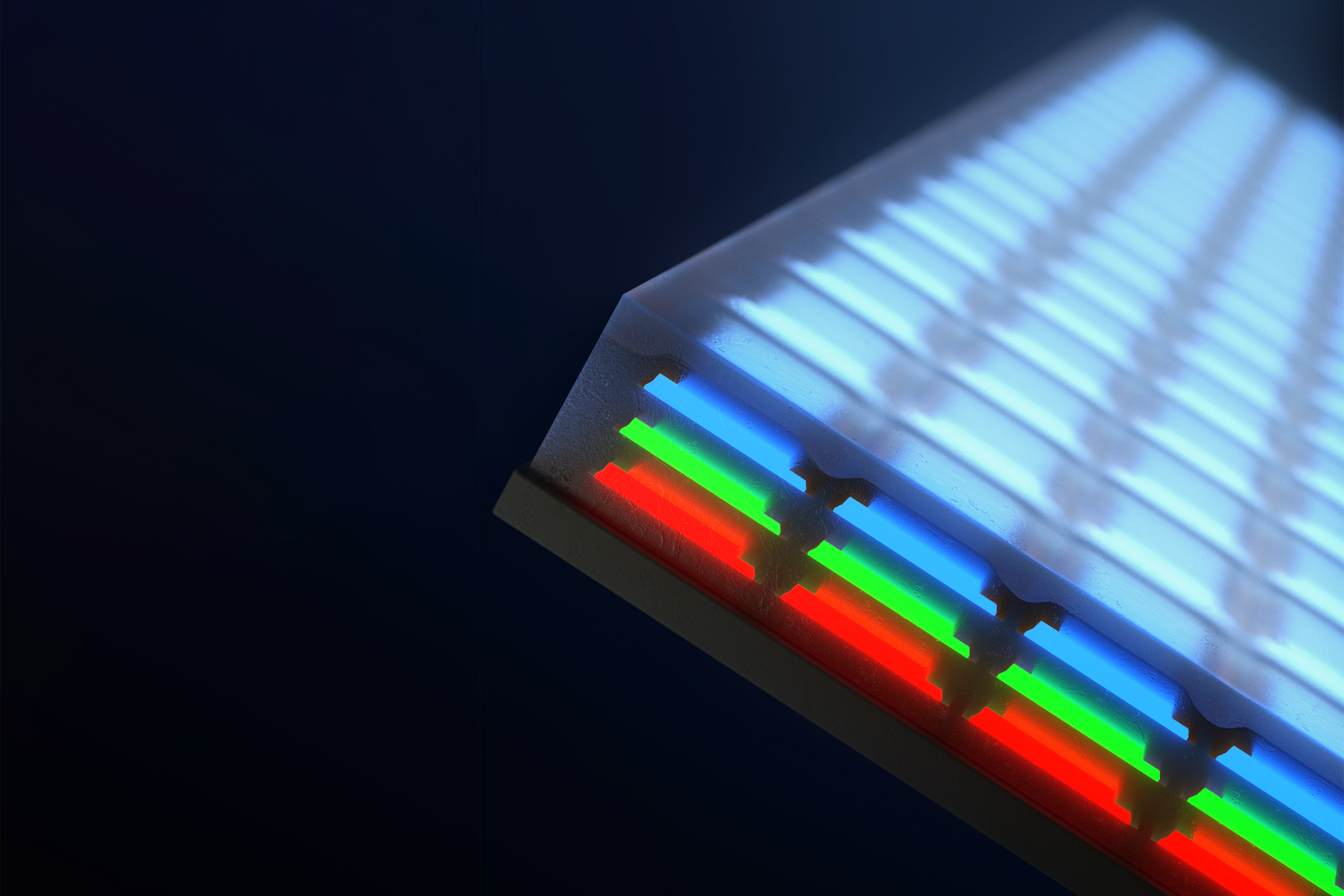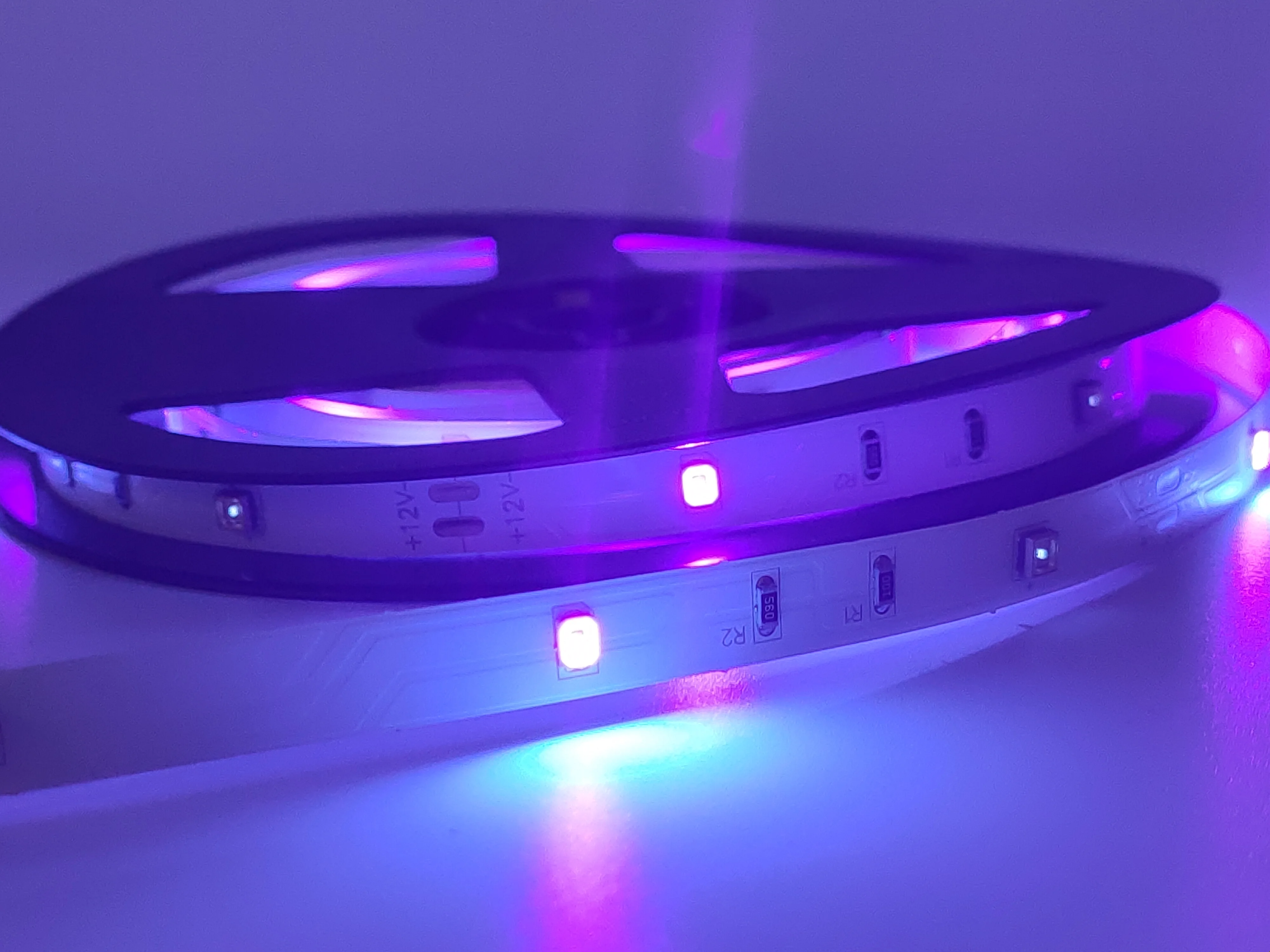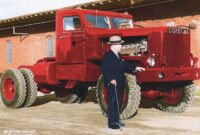Led Lights Pickup Trucks: Illuminating the Road Ahead pickup.truckstrend.com
Pickup trucks have long been synonymous with rugged utility, powerful performance, and a go-anywhere attitude. While their core functionality remains steadfast, advancements in automotive technology continue to redefine their capabilities and aesthetics. Among the most significant evolutions in recent years is the widespread adoption of LED lighting. Far more than just a brighter bulb, LED lights for pickup trucks represent a fundamental shift in safety, efficiency, and customization, transforming how truck owners see and are seen on the road, trail, or job site.
This comprehensive guide will delve into the world of LED lights for pickup trucks, exploring their myriad benefits, the diverse types available, crucial considerations for selection, and practical advice for installation and maintenance. Whether you’re a seasoned truck enthusiast, a professional seeking enhanced utility, or simply looking to upgrade your vehicle’s appearance, understanding LED lighting is key to unlocking your truck’s full potential.
Led Lights Pickup Trucks: Illuminating the Road Ahead
The Evolution of Pickup Truck Lighting: Why LEDs?
For decades, halogen bulbs were the standard for vehicle lighting, offering basic illumination at an affordable cost. Later, High-Intensity Discharge (HID) lights emerged, providing brighter, whiter light but often requiring complex ballasts and warm-up times. The advent of Light Emitting Diodes (LEDs) marked a true revolution. LEDs generate light through the movement of electrons in a semiconductor material, offering a host of advantages that traditional lighting simply cannot match:
- Energy Efficiency: LEDs consume significantly less power than halogen or HID lights, reducing strain on your truck’s electrical system and potentially improving fuel economy.
- Exceptional Longevity: With lifespans often exceeding 50,000 hours, LEDs can outlast the truck itself, virtually eliminating the need for frequent bulb replacements.
- Superior Brightness & Clarity: LEDs produce a crisp, often daylight-like white light (high color temperature) that dramatically improves visibility, reducing eye strain and enhancing perception of obstacles.
- Instant-On Capability: Unlike HIDs, LEDs reach full brightness instantly, a critical safety feature for brake lights and high beams.
- Durability: Lacking filaments or fragile glass components, LEDs are highly resistant to vibrations and impacts, making them ideal for the demanding environments pickup trucks operate in.
- Compact Size & Design Flexibility: Their small size allows for innovative and aesthetically pleasing lighting designs, from sleek light bars to intricate headlight assemblies.

These inherent advantages make LEDs the superior choice for modern pickup truck owners seeking to optimize their vehicle’s performance and appearance.
Types of LED Lights for Pickup Trucks
The versatility of LED technology means there’s an LED solution for virtually every lighting need on a pickup truck.

- LED Headlights & Fog Lights: These are perhaps the most common upgrades. Available as direct bulb replacements (LED conversion kits) or complete headlight/fog light assemblies, they offer vastly improved forward visibility. Many modern trucks come equipped with OEM LED headlights, but aftermarket options provide even greater brightness or unique styling.
- LED Light Bars: Ranging from a few inches to over 50 inches in length, light bars are typically mounted on the grille, bumper, roof rack, or behind the grille. They are indispensable for off-roading, construction, or any situation requiring massive amounts of auxiliary light. They come in various beam patterns (spot, flood, combo) to suit different needs.
- LED Work Lights & Pod Lights: These smaller, often square or round lights are designed for specific task illumination. Mounted on toolboxes, bumpers, or as ditch lights, they provide focused light for working around the truck at night, hooking up trailers, or navigating tight trails.
- LED Tail Lights & Brake Lights: Replacing incandescent tail lights with LEDs improves rear visibility for other drivers, especially when braking, due to their instant-on nature and brighter output.
- LED Interior Lighting: Upgrading dome lights, map lights, and cargo bed lights to LEDs provides a brighter, more modern interior ambiance and better illumination for finding items.
- LED Underglow & Accent Lighting: Primarily for aesthetic purposes, these lights are mounted underneath the truck or in wheel wells, offering vibrant color options for show trucks or personal expression.
- LED Grille Lights & Marker Lights: Often small, amber or white lights integrated into the grille or fenders, these can enhance the truck’s presence and comply with certain DOT regulations for wide vehicles.

Benefits Beyond Brightness: The Practical Advantages
Beyond the obvious improvement in illumination, LED lights bring a host of practical benefits to pickup truck owners:
- Enhanced Safety: The most crucial advantage. Brighter, clearer light improves the driver’s reaction time by illuminating hazards sooner. Better visibility of your truck for other road users, especially with bright brake lights and turn signals, significantly reduces the risk of accidents.
- Improved Aesthetics & Modernization: LEDs instantly give an older truck a contemporary, high-tech look. Their crisp light and often unique housing designs make a powerful visual statement.
- Increased Functionality for Work & Play: For contractors, farmers, or outdoor enthusiasts, dedicated LED work lights and light bars transform nighttime operations, making tasks safer and more efficient.
- Long-Term Cost Savings: While the initial investment might be higher, the extended lifespan of LEDs means less frequent replacements, saving money and hassle over time. Their lower power draw also marginally reduces fuel consumption.
- Robust Durability in Harsh Conditions: Designed to withstand vibrations, extreme temperatures, and moisture, LEDs are perfectly suited for the demanding environments pickup trucks often encounter, from dusty trails to heavy rain.
Choosing the Right LED Lights for Your Truck: Key Considerations
Selecting the ideal LED lights involves more than just picking the brightest option. Thoughtful consideration of several factors will ensure you get the right product for your needs.
- Application & Purpose: Are you primarily looking for improved daily driving visibility, serious off-road illumination, work site lighting, or aesthetic enhancement? Your primary use case will dictate the type, brightness, and beam pattern needed.
- Brightness (Lumens) & Beam Pattern: Lumens indicate total light output. For forward lighting, consider the beam pattern:
- Spot: Concentrated, long-distance beam.
- Flood: Wide, short-distance spread.
- Combo: A mix of both for versatile illumination.
- For headlights, focus on a well-defined cut-off to avoid blinding oncoming drivers.
- Color Temperature (Kelvin – K): Measured in Kelvin, this determines the "color" of the light.
- 4000K-5000K: Pure white, often preferred for clarity.
- 6000K-6500K: Cool white with a slight blue tint, common in many aftermarket LEDs.
- Higher K values (8000K+) can appear very blue and may reduce visibility in adverse weather.
- Durability & IP Rating: An Ingress Protection (IP) rating indicates resistance to dust and water. For trucks, look for IP67 or IP68, meaning complete dust protection and resistance to submersion (IP67 for 30 mins at 1m, IP68 for prolonged submersion).
- Legal Compliance: This is crucial, especially for auxiliary lights. Many states have regulations on the number, placement, and brightness of off-road lights when on public roads. Ensure headlights are DOT-approved if replacing original equipment.
- Compatibility: Verify that the LED bulbs or assemblies are compatible with your truck’s make, model, and year. Some modern trucks use CANBUS systems that require special LED bulbs or decoders to prevent "bulb out" warnings or flickering.
- Installation Difficulty & Wiring: Decide if you’re comfortable with a DIY installation or if professional help is required. Consider the complexity of wiring, especially for light bars that need relays and switches.
- Budget vs. Quality: While tempting to opt for the cheapest option, investing in reputable brands often ensures better performance, durability, and a longer lifespan.
Installation Guide: A General Overview
While specific steps vary by product and truck model, here’s a general guide for installing LED lights:
Safety First: Always disconnect your truck’s negative battery terminal before starting any electrical work.
Tools Required: Basic hand tools (wrenches, screwdrivers), wire strippers, crimpers, electrical tape, heat shrink tubing, zip ties, and potentially a multimeter.
General Steps:
- Mounting: Securely attach the LED light assembly (e.g., light bar, work pod) to its intended location using the provided brackets. Ensure it’s stable and aligned.
- Wiring Power (Positive):
- Headlights/Fog Lights: For direct bulb replacements, it’s often plug-and-play into the existing harness. For full assemblies, follow manufacturer instructions for connecting to the vehicle’s headlight harness.
- Auxiliary Lights (Light Bars, Pods): Run a positive wire from the LED light to a relay. The relay’s power input should come directly from the battery (with an inline fuse near the battery for protection).
- Wiring Ground (Negative): Connect the negative wire from the LED light to a clean, unpainted metal surface on the truck’s chassis, or directly to the negative battery terminal.
- Wiring the Switch (for Auxiliary Lights): Run a wire from the relay’s trigger terminal to an interior switch. The switch itself will need a fused power source (often from an "ignition-on" circuit or directly from the battery) and a ground connection.
- Testing: Reconnect the battery. Turn on the lights to ensure they function correctly.
- Aiming & Adjustment: For headlights and auxiliary forward-facing lights, proper aiming is crucial to maximize visibility without blinding oncoming traffic. Adjust according to local regulations or manufacturer guidelines.
- Cable Management: Secure all wiring with zip ties, ensuring it’s away from hot engine components, moving parts, and sharp edges. Use convoluted tubing or loom for added protection.
When to Seek Professional Help: If you’re uncomfortable with automotive electrical work, dealing with CANBUS systems, or performing complex installations (like roof-mounted light bars requiring drilling), it’s always best to consult a qualified automotive electrician or installation shop.
Maintenance and Troubleshooting
LED lights are relatively low maintenance, but a few practices can ensure their longevity:
- Keep Lenses Clean: Dirt, mud, and road grime can significantly reduce light output. Regularly clean the lenses with a soft cloth and mild soap.
- Check Connections: Periodically inspect wiring connections for corrosion or looseness, especially after off-road excursions.
- Troubleshooting Common Issues:
- Flickering/Dimming (Headlights): Often a sign of CANBUS incompatibility. A decoder or resistor pack may be needed.
- Not Turning On: Check the fuse, wiring connections, and ensure the switch is functioning. A faulty relay can also be a culprit for auxiliary lights.
- Condensation Inside Lens: Indicates a compromised seal. Contact the manufacturer for warranty or consider resealing if possible.
Practical Advice and Actionable Insights
- Do Your Research: Before purchasing, read reviews, watch installation videos, and compare specifications. Not all LEDs are created equal.
- Don’t Skimp on Quality: Cheap LEDs often have poor heat management (leading to premature failure), inaccurate beam patterns, and inferior construction. Invest in reputable brands.
- Understand Local Laws: Always be aware of and comply with your local and state regulations regarding auxiliary lighting, especially for light bars on public roads. Many states require them to be covered when not in off-road use.
- Consider Future Upgrades: If you plan on adding more accessories later, ensure your wiring setup (e.g., fuse box, relay panel) can accommodate future expansion.
- Proper Wiring is Crucial: Incorrect wiring can lead to electrical fires, damage to your truck’s system, or poor light performance. Use appropriate gauge wire, fuses, and relays.
Price Table: Estimated Costs for LED Lights for Pickup Trucks
Please note that prices are highly variable based on brand, quality, features, and retailer. These are general estimates for aftermarket products.
| LED Light Type | Description | Typical Price Range (USD) | Key Features |
|---|---|---|---|
| Headlight Conversion Kit | Pair of LED bulbs (H11, 9005, etc.) to replace halogen headlights. | $50 – $150 | Plug-and-play installation, brighter output, instant-on, often includes CANBUS decoders. Beam pattern quality varies. |
| Full LED Headlight Assembly | Complete headlight unit (housing and LEDs) designed as a direct replacement. | $300 – $1500+ | Integrated design, superior optics (projector style common), often includes DRLs (Daytime Running Lights), sequential turn signals, more robust build. Provides best beam pattern. |
| LED Fog Light Conversion Kit | Pair of LED bulbs for existing fog light housings. | $30 – $80 | Improved visibility in fog/inclement weather, matches LED headlights. |
| LED Light Bar (Small) | 4-12 inch straight or curved bar. | $40 – $150 | Auxiliary spot/flood lighting, ideal for bumpers, grilles, or smaller applications. Often IP67/IP68 rated. |
| LED Light Bar (Medium) | 20-30 inch straight or curved bar. | $100 – $400 | Popular size for roof racks, bumpers, or behind-grille mounts. Provides significant auxiliary lighting for off-roading or work. |
| LED Light Bar (Large) | 40-50+ inch straight or curved bar. | $250 – $800+ | Maximum auxiliary light output, typically roof-mounted for wide-area illumination. Heavy-duty construction, advanced optics. |
| LED Pod / Work Lights | Small (3-6 inch) square or round individual lights. | $20 – $100 (per pair) | Versatile for ditch lights, reverse lights, bed lights, or specific task lighting. Available in spot, flood, or diffused patterns. |
| LED Tail Lights | Complete replacement tail light assemblies with integrated LEDs. | $150 – $500+ (per pair) | Modernized look, brighter brake/running lights, instant-on response, often includes unique light signatures or sequential turn signals. |
| LED Interior Light Kit | Replacement bulbs for dome, map, and cargo lights. | $20 – $70 | Brighter interior, clearer visibility for cabin and bed. Often cooler color temperature. |
| LED Underglow Kit | Flexible LED strips for undercarriage accent lighting. | $80 – $300 | Aesthetic enhancement, often multi-color (RGB) with remote control and various light modes. Primarily for show or parked vehicles. |
| LED Grille / Marker Lights | Small LED lights for grille inserts or fender flares. | $20 – $80 (per set) | Adds style and visibility, often amber or white. Can be DOT compliant as auxiliary marker lights. |
Frequently Asked Questions (FAQ) about LED Lights for Pickup Trucks
Q1: Are LED lights legal on pickup trucks?
A1: Generally, yes, but it depends on the specific light and its use. DOT-approved LED headlight and tail light replacements are legal for road use. Auxiliary lights like light bars are typically legal for off-road use only and may need to be covered on public roads. Always check your local and state regulations.
Q2: Do I need a CANBUS decoder or resistor for LED headlights?
A2: For many modern trucks (especially those from 2007 onwards), yes. CANBUS systems monitor electrical currents, and LEDs draw less power, which can trigger "bulb out" warnings or cause flickering. A CANBUS decoder or load resistor simulates the power draw of a halogen bulb, preventing these issues.
Q3: How long do LED lights typically last?
A3: High-quality LED lights can last anywhere from 30,000 to 50,000 hours or more. This significantly outlasts halogen bulbs (500-1,000 hours) and HIDs (2,000-4,000 hours), meaning they could last the lifetime of your truck.
Q4: Can I install LED lights myself, or do I need a professional?
A4: Simple LED bulb replacements for headlights or interior lights are often DIY-friendly, requiring basic tools and minimal electrical knowledge. More complex installations, like full light bars requiring dedicated wiring harnesses, relays, switches, and potentially drilling, might be better left to a professional, especially if you’re uncomfortable with automotive electrical systems.
Q5: What’s the difference between a spot beam and a flood beam?
A5: A spot beam produces a narrow, focused light pattern that travels a long distance, ideal for illuminating distant objects. A flood beam creates a wide, dispersed light pattern that illuminates a broad area up close, excellent for peripheral vision or working around the truck. Many auxiliary lights offer a "combo" beam, which integrates both spot and flood elements.
Q6: Do LED lights get hot?
A6: While LEDs are more energy-efficient and convert more energy into light than heat compared to halogens, they still generate some heat. This heat needs to be dissipated to ensure longevity, which is why quality LED lights incorporate heat sinks (often aluminum fins) and sometimes small cooling fans.
Conclusion
LED lights have undeniably transformed the capabilities and appeal of pickup trucks. From enhancing safety and improving nighttime visibility to offering unparalleled customization and rugged durability, the benefits of upgrading to LED technology are clear. Whether you’re navigating treacherous off-road trails, working late into the night, or simply cruising down the highway, LED lights provide a superior, more efficient, and more stylish way to illuminate your path. By understanding the types, considerations, and proper installation techniques, pickup truck owners can confidently embrace the LED revolution, ensuring their vehicle is not just ready for any task, but also stands out from the crowd. The future of pickup truck lighting is bright, and it’s powered by LEDs.



